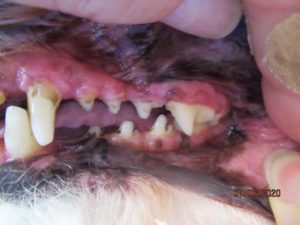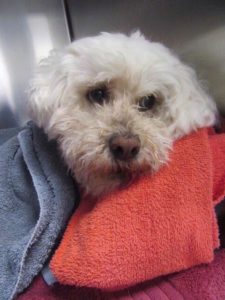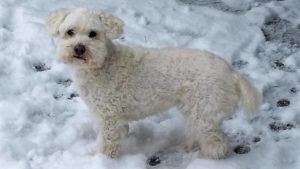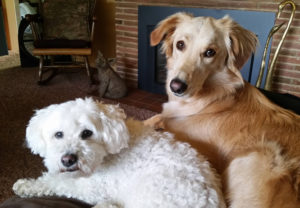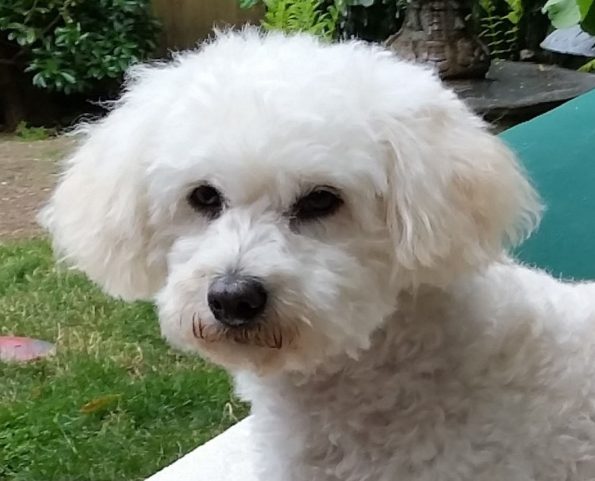
Most all of you pet owners know that taking care of your pet’s teeth can make a difference. Just like in people, a healthy mouth requires regular home care, and that isn’t always as easy as it sounds. Teaching our pet’s to let us to look in their mouths, lifting up their lips and inspecting teeth, let alone getting them to accept daily tooth brushing can seem daunting. A step-wise approach and positive reinforcement can go a long ways to teaching our pets to accept home care. However, even the best home care can’t prevent disease from happening under the gum lines.
Sophie is our Pet of the Month for September. She was adopted in 2017 and is now an important part of her family’s life. Two months after she came home, at 3 years of age, she had full-mouth radiographs and her teeth professionally cleaned at Hawthorne Hills Veterinary Hospital. Sophie had some minor changes but overall, her mouth was deemed healthy and her owners started a regular home care routine. They have been brushing her teeth regularly since.
Despite regular home care, you can see from the photos taken during a recent ‘healthy pet’ visit that she has some tartar and definitely some gum recession on her upper incisors (front teeth). She was scheduled for an anesthetic procedure to assess, clean and treat her dental disease. The doctors suspected she might need extraction of some of the incisors, yet it wasn’t until we got full mouth radiographs that the extent of her dental disease was uncovered.
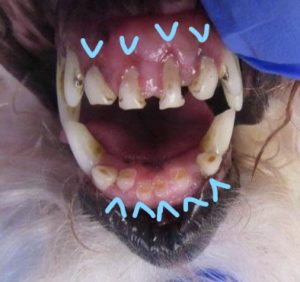
The upper incisors have gum recession, the lower incisors were worn to the gum line. The blue arrows mark teeth that were not healthy and were extracted.
Here is a photo of the right side after the cleaning procedure.
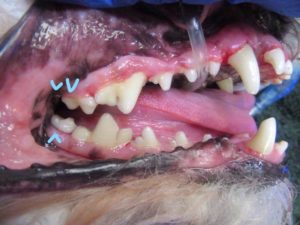
After cleaning, teeth look ‘healthy’ but blue arrows indicate areas where radiographs revealed infection.
Normally there is a gingival space of 2-3mm below the gum line which marks the area where the gum is attached to the underlying bone. Healthy teeth are solidly anchored in bone, yet when tartar builds up, and bacteria get trapped below the gum line, disease progresses. This process can be happening even in the face of regular brushing (and flossing as people do) which is why professional cleaning is so important. Eventually, the buildup of bacteria and tartar leads to gingivitis and infection along the roots of the teeth which results in loss of bone. If the process has progressed far enough, the only solution is extracting the tooth.
Sophie’s radiographs reveled significant loss of bone holding her teeth in place, and lucency (halos of missing bone) around the roots of multiple large chewing teeth. In addition, she had areas of deep pocketing along the roots of a number of teeth.
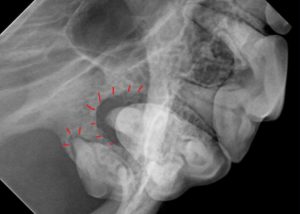
The red marks outline pockets of infection (lucency) at the roots of these upper rear chewing teeth. Extraction is the only treatment.
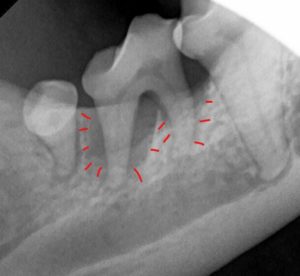
The red marks outlined the pocket of infection in the bone undermining the support of this tooth. It needed to be extracted.
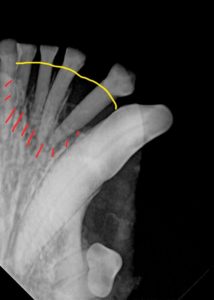
The yellow line shows where the gum line was (look at the photo). The red marks show how far the bone had receeded – nothing was holding these teeth in place and they needed to be extracted.
Dogs have 42 teeth (20 uppers and 22 lowers). Dogs with short faces, think Pug, versus a long faces, think German Shepherd Dog, can be at greater risk for gum disease because the teeth are crowded into a small space. However, genetics, diet, type of chew toys, trauma, home care and frequency of professional cleaning all play a part in keeping the mouth healthy.
Ultimately, Sophie needed oral surgery to extract 9 of her 12 incisors, and 5 of her larger chewing teeth.
The remarkable thing was her owners discovered that they had a ‘whole new dog’ after the infection in her mouth was dealt with. They said she was playing more, she was acting more joyful and they were seeing a whole new side of her personality.
Having adopted her as an adult dog, they just assumed that as she was aging, she was slowing down and that was normal for her. Dogs and cats just don’t complain in the same ways that people do so it can be easy to make assumptions. Once the infected and painful teeth were removed, they were able to realize how much the diseased teeth were affecting her daily life.
Our goal is to save teeth whenever possible, but comfort and health take precedence. Fortunately for Sophie, and all dogs and cats who need teeth extracted, they can eat fine, play with toys and lead a very happy life without individual or even all of their teeth. Loss of teeth should never stop you from seeking appropriate care for your dog or cat.
Sophie will be at risk for further dental disease and will require yearly anesthesia and re-assessment of her teeth and oral health to stay healthy going forward. However, we are so thankful that we could help make such a difference in her young life and wish her much happiness with her family.

 6512 12th Ave NE
6512 12th Ave NE
